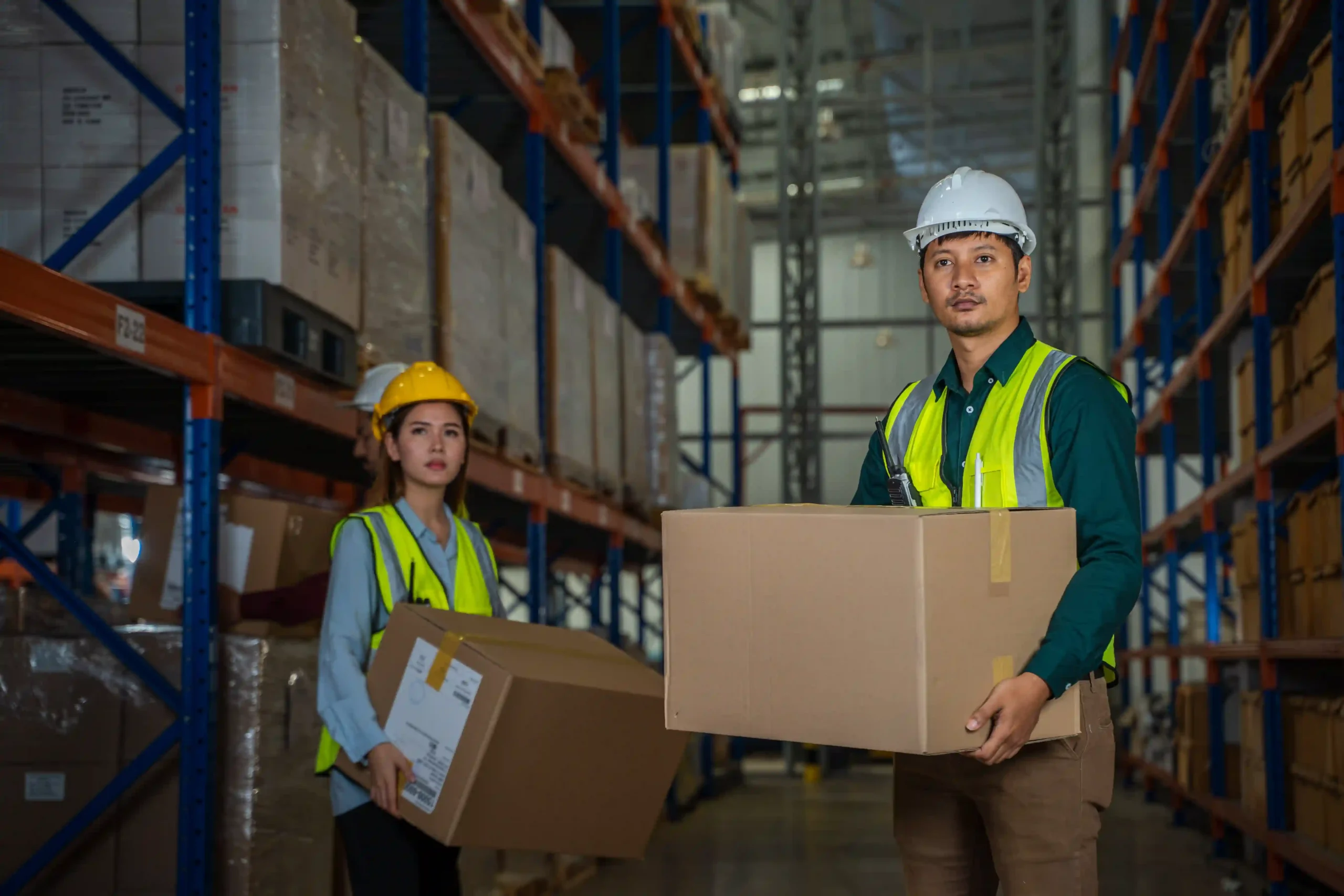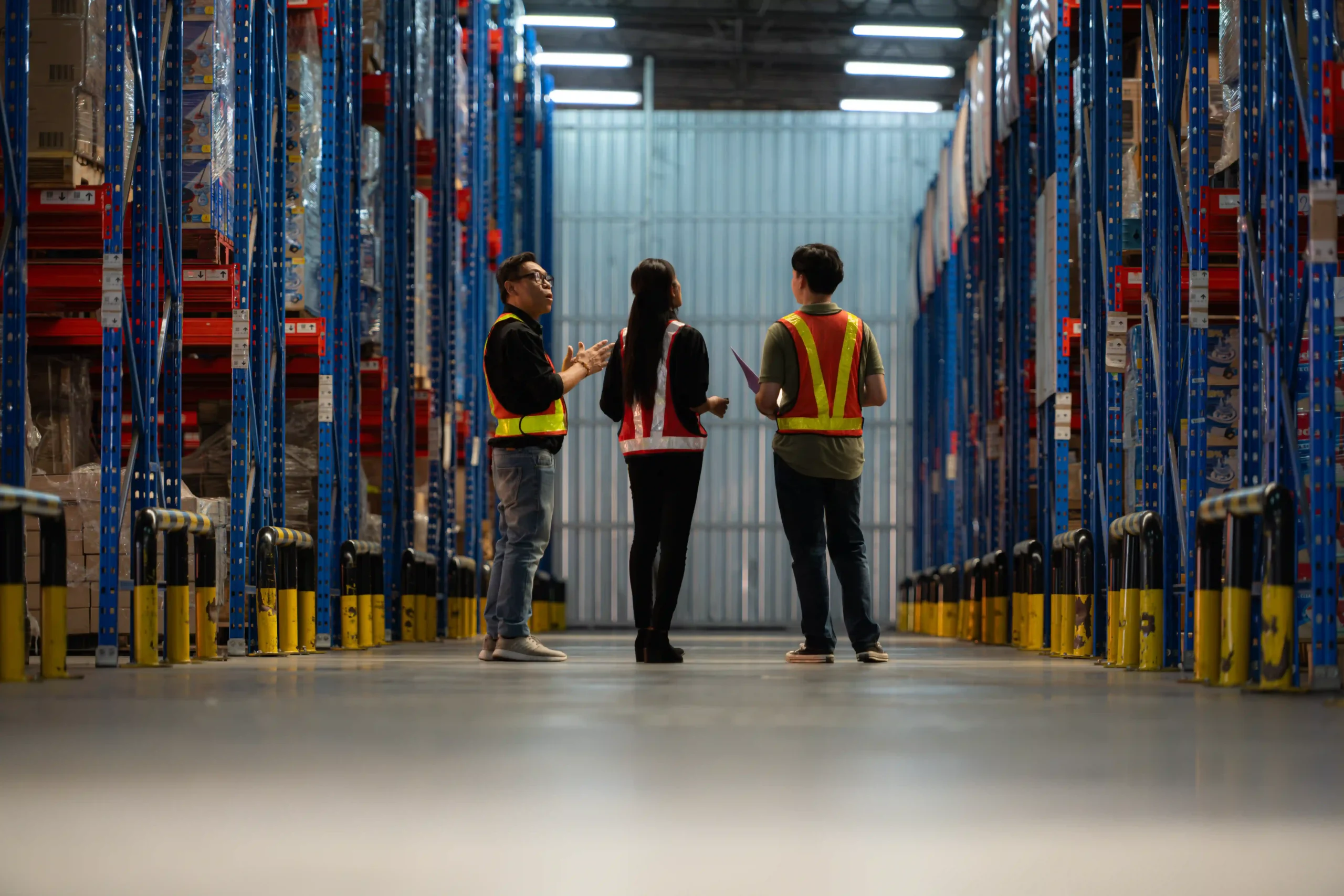Warehouse logistics optimization is the process of enhancing warehouse operations to achieve maximum efficiency and productivity. This involves streamlining processes from inbound receiving to outbound shipping, ensuring that every aspect of the warehouse contributes to overall performance.
By focusing on layout design, technology integration, and data-driven decision-making, businesses can reduce costs and meet growing logistics demands.

In my 35 years at Tri-Link FTZ, I’ve observed several recurring inefficiencies that hinder warehouse performance. One major issue is poor layout design, which leads to excessive travel time for workers and delays in order fulfillment.
Manual processes are another bottleneck, often resulting in errors and slow operations. Additionally, lack of real-time data can cause inventory discrepancies and mismanagement.
Addressing these challenges is essential for effective warehouse logistics optimization.
An efficient warehouse layout is crucial for optimizing logistics. By strategically organizing storage areas, picking zones, and shipping docks, businesses can minimize travel time and streamline workflows.
For example, placing high-demand items near packing stations reduces picking time and increases throughput. Implementing clear signage and standardized processes further enhances efficiency.
At Tri-Link FTZ, we’ve seen significant improvements in order accuracy and speed by focusing on layout optimization.
A robust WMS is integral to warehouse logistics optimization. It provides real-time visibility into inventory levels, order statuses, and workflow efficiency.
By automating tasks such as order picking and inventory tracking, a WMS reduces errors and labor costs. Integration with other systems, like transportation management, ensures seamless operations across the supply chain.
Implementing a WMS at Tri-Link FTZ has enabled us to handle increased volumes without compromising accuracy or speed. Read more here.

Data analytics plays a pivotal role in warehouse logistics optimization. By analyzing key metrics such as order accuracy, picking times, and inventory turnover, businesses can identify areas for improvement.
Predictive analytics can forecast demand, allowing for better inventory planning and resource allocation. At Tri-Link FTZ, we’ve utilized data insights to refine our processes, resulting in enhanced efficiency and customer satisfaction.
Incorporating advanced technologies is essential for modern warehouse logistics optimization. Automation tools like conveyor systems and robotic pickers increase speed and reduce manual labor.
RFID technology enhances inventory tracking accuracy, while IoT devices provide real-time monitoring of equipment and environmental conditions. These technologies not only improve operational efficiency but also contribute to a safer and more reliable warehouse environment.
Maintaining inventory accuracy is fundamental to warehouse logistics optimization. Regular cycle counts help in identifying discrepancies early.
Implementing barcode scanning and RFID systems ensures precise tracking of items. Training employees on standardized picking procedures minimizes errors.
Additionally, organizing inventory based on demand frequency can streamline picking processes. At Tri-Link FTZ, these practices have significantly reduced picking errors and improved overall accuracy.

Cross-docking and just-in-time (JIT) inventory methods are effective strategies for warehouse logistics optimization. Cross-docking reduces storage needs by directly transferring incoming goods to outbound shipments.
JIT inventory minimizes holding costs by receiving goods only as needed for production or sales. Implementing these methods requires precise coordination and reliable supplier relationships.
At Tri-Link FTZ, adopting cross-docking and JIT practices has led to faster turnaround times and lower inventory costs.
Tracking KPIs is vital for assessing the effectiveness of warehouse logistics optimization efforts. Important KPIs include order accuracy rate, inventory turnover ratio, picking and packing efficiency, and on-time shipment rate.
Monitoring these metrics provides insights into operational performance and highlights areas needing improvement. Regularly reviewing KPIs ensures that optimization strategies align with business goals and customer expectations.
Optimized warehouse logistics directly contribute to higher customer satisfaction by ensuring timely and accurate order fulfillment. Efficient operations reduce errors and delays, leading to increased customer trust and loyalty.
Moreover, streamlined processes and reduced waste result in significant cost savings. At Tri-Link FTZ, our commitment to warehouse logistics optimization has not only improved our bottom line but also strengthened our customer relationships.

When I look back over the decades at Tri-Link FTZ, one of the most important lessons we’ve learned is that optimization isn’t a one-time event — it’s a continuous commitment. We didn’t achieve operational excellence overnight.
It took years of testing, adapting, and listening — not just to our clients, but to our warehouse team. They’re the heartbeat of the operation, and their feedback has been critical in building smarter systems.
A key starting point in any optimization effort is establishing baseline performance. Before making any changes, we measure everything: how long it takes to receive inventory, how fast we process returns, what our pick accuracy is by SKU, and even how often forklifts are idling.
This initial benchmark gives us a truth to measure against — and more importantly, to improve from. Next, we identify quick wins that don’t require a total overhaul.
Something as simple as re-zoning fast-moving inventory closer to the loading dock made a measurable impact for us in just two weeks. It’s these small shifts — informed by data but applied with human judgment — that start building momentum.
Over time, these improvements compound, transforming warehouse logistics optimization from a project into a culture. Read more here.
The ability to see what’s happening across your warehouse operations in real time is one of the biggest breakthroughs of the past decade. At Tri-Link FTZ, our investment in a real-time dashboard system powered by our Warehouse Management System (WMS) has revolutionized the way we make decisions.
I can be in a meeting, check the live dashboard, and instantly know whether we’re on pace to meet same-day shipping targets. That kind of insight used to require hours of reporting, often compiled after the fact. Now, it’s instant.
This has given us the confidence to promise faster delivery windows to our clients, knowing we have the visibility to back it up. But more importantly, real-time systems allow us to fix issues as they happen — not after the damage is done.
If an inbound shipment is delayed or a picking zone is falling behind, alerts go out and the team pivots. That agility has been a key competitive advantage, especially as logistics expectations from consumers grow more demanding by the year.
Technology alone doesn’t optimize a warehouse. Your people do. And after 35 years in this industry, I can tell you that culture — the daily behaviors, the training systems, the way leadership communicates — matters just as much as automation.
We’ve invested heavily in training our team to work with our systems, not just within them. That means they understand why a new pick path was implemented, or how WMS logic determines slotting decisions.
When people know the “why” behind process changes, they’re far more likely to embrace them — and even improve upon them. Every new employee at Tri-Link FTZ goes through a multi-week onboarding process that includes systems training, safety certification, and shadowing time with a mentor.
We also offer quarterly upskilling workshops on topics ranging from handling high-value SKUs to advanced returns processing techniques. It’s this commitment to people that makes every new tool we implement even more effective.

One of the most overlooked parts of warehouse logistics optimization is preparing for change — especially seasonal fluctuations. Over the years, we’ve supported brands in industries ranging from consumer electronics to cosmetics, and each has its own “peak season.”
If your warehouse can’t flex to meet those spikes, customer satisfaction and profitability both take a hit. At Tri-Link FTZ, we prepare months in advance for each client’s high-volume window.
We create flexible racking zones that can expand or contract, we preload seasonal inventory into the most accessible locations, and we cross-train staff so that team members can shift roles based on the day’s demand. We also integrate predictive analytics tools that tell us — with incredible accuracy — when a spike will hit and how much labor we’ll need on hand.
The result? We stay ahead of the wave, instead of reacting to it.
That readiness has not only boosted our throughput during peak periods but also earned the trust of our partners, many of whom now treat us as an extension of their own supply chain.
At its core, warehouse logistics optimization isn’t just about saving money or moving faster. It’s about being more competitive. In today’s landscape, where customers expect Amazon-level speed and 100% accuracy, businesses that can’t deliver will fall behind.
Our clients come to us with complex challenges: fast-changing demand, tight margins, regulatory compliance, and rising expectations. What sets us apart is not just that we manage warehouses — it’s that we continuously optimize them.
We’ve built a system that adapts, learns, and improves, all while staying aligned to our clients’ growth goals. And that’s really the essence of warehouse logistics optimization. It’s not a one-size-fits-all solution.
It’s a dynamic process — and when done right, it creates a foundation for sustainable, scalable success.
Looking ahead, the future of warehouse logistics optimization is bright — and deeply tech-driven. Artificial Intelligence (AI) is already helping us predict inventory needs more accurately.
Machine learning models, when fed years of historical order data, can help forecast not just demand but return rates, which helps us plan reverse logistics more effectively. We’re also seeing a rise in human-centric warehouse design — think ergonomic workstations, climate-controlled zones, and even wellness pods for high-volume teams.
These aren’t just feel-good perks. They reduce injuries, lower turnover, and keep performance high. And then there’s the continued evolution of robotics.
While we’ve already implemented robotic arms for sorting and packing, what excites me most are the autonomous forklifts and drones. These technologies are unlocking levels of speed and safety that were simply unimaginable a decade ago.
But as we adopt these advancements, our approach remains grounded: don’t chase tech for tech’s sake. Every system we implement at Tri-Link FTZ is measured by its impact on efficiency, accuracy, and customer experience.
Warehouse logistics optimization isn’t just a project. It’s a mindset. It’s about believing that every process can be better, every team more empowered, and every order more accurate.
We’ve built our reputation at Tri-Link FTZ by living that mindset every single day. Our team isn’t just experienced — we’re obsessed with improvement.
That’s what’s made us a trusted partner for some of the most innovative and high-growth brands across North America. And we’d love to help you next.
Let’s optimize your logistics — and unlock what your warehouse is truly capable of.
Share this article
We have other resources available upon request as well as one-on-one support and personalized answers, just like our services.
Simply contact us anytime and we’ll get back to you to answer your questions and provide meaningful answers that show you how Tri-Link supports your logistics, reduces costs, and accelerates efficiency.
Tri-Link delivers exceptional FTZ and 3PL services tailored to your global trade needs.
Our solutions combine innovation, quality, and efficiency to exceed your expectations and meet your specific requirements.